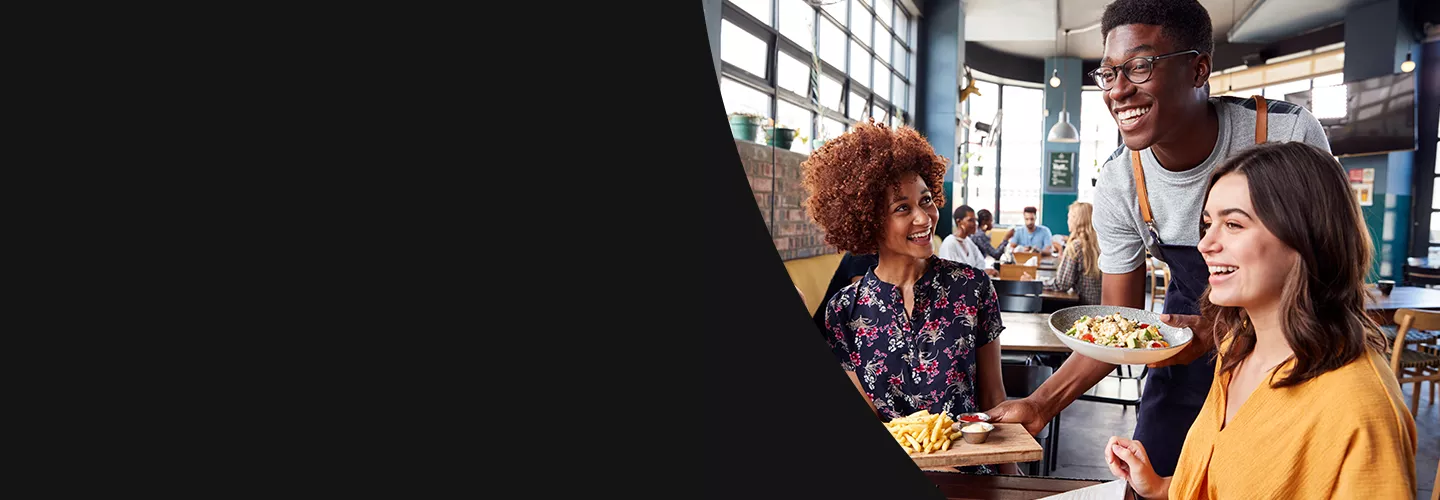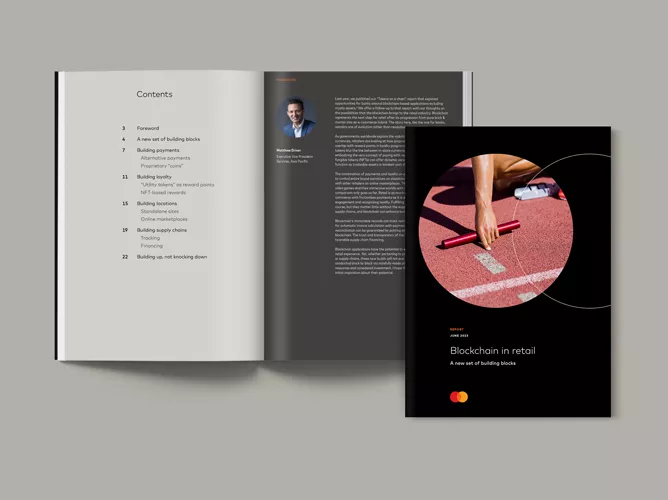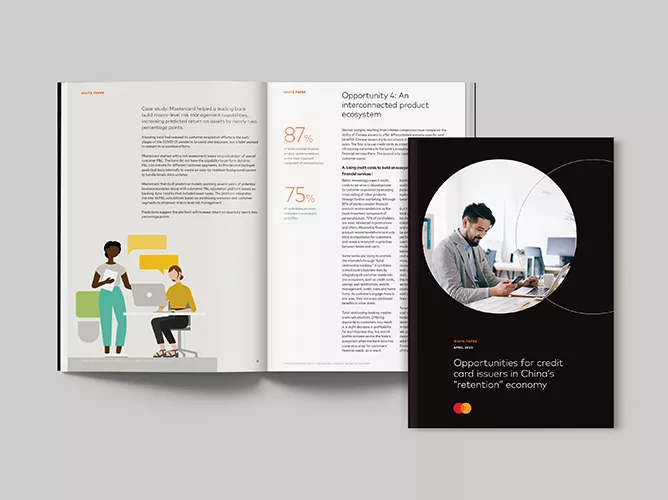August 1, 2023
Digital loyalty programs are growing as a key marketing strategy for restaurants, and new tech helps them satisfy customer demand for a more personalized experience.
Global membership in digital loyalty programs has increased to 24 billion participants in 2022 and is estimated to reach 32 billion by 2026.1
However, traditional loyalty cards are only expected to grow to 7.6 billion members in 2026. Most brands are still stuck in the world of traditional loyalty memberships, but it’s time to step into the future.
Many restaurant loyalty programs available to consumers today are undifferentiated and fail to deliver tangible benefits. For those brands, their programs don’t offer any real benefit to the customer, nor do they drive any desired behaviors like repeat visits or larger order sizes. This further causes members to disengage and deprioritize the programs that are the least relevant and valuable. After all, if everyone receives the same incentive and gets the same reward, that’s not personalized.
In contrast, next generation loyalty drives cross-channel engagement, rather than just transactions. Consumers are willing to engage with brands, but only if they feel a connection or it is in exchange for worthwhile benefits. This provides a great opportunity for brands to create deep, meaningful relationships with customers.
The top loyalty programs have the power to transform businesses by building relationships at every step in the customer journey; increasing retention and reducing churn; establishing a customer database; boosting cross-sell and upsell; incentivizing product trial and acquisition; boosting share of wallet and differentiating the brand; expanding reach of marketing; and finally, yielding tremendous consumer, business, product, and marketing insight.
It all starts with a solid customer engagement and loyalty platform. In evaluating such platforms, all restaurants (whether they be dine-in, fast casual, or QSR) should ask if it’s:
- Powered by unified customer profiles
- Customizable
- Scalable
- Mobile-first
- Omni-channel capable
- Data-driven
A reliable platform enables real-time personalized engagement based on comprehensive customer profiles that reflect preferences and history with the brand. Below, we guide restaurant marketers on three winning tactics that top restaurant loyalty programs use, what restaurants need in a loyalty and engagement solution, and the major factors to consider when implementing a solution.
Winning tactics
The majority of restaurant loyalty programs follow the “currency” format, where earned points are rewarded with products and perks. But the best currency-based programs take it one step further by fostering an emotional connection with the brand, making these programs hard to replicate.
There are three tactics that stand out among the best restaurant loyalty programs:
- Earning through visits and gamification
- Product as reward
- Mobile or online ordering
Earning through visits and gamification
Some leading restaurants reward their customers for visits using games and fun in-app experiences. The most innovative restaurants reward customers with points both for making everyday purchases and for engaging in purchase-based challenges, like double points days and visit streaks. Further add the prospect of benefits like members-only promotions and experiences, and these challenges encourage customers to come back.
To be successful, restaurant apps must be easy to use, clearly communicate how to earn and redeem rewards, and may provide functionality to allow customers to opt-in to receiving personalized communications about the challenges and menu items they think customers would enjoy based on their purchase history and customer-provided personal information like dietary restrictions or favorite dishes.
Product as reward
Successful restaurant loyalty programs take a “surprise and delight” approach to rewards. They create instant gratification by surprising new members with their first reward immediately upon signing up in-store. From there, restaurants can continue to delight customers with free food surprises based on their preferences.
Rewarding customers with more free products introduces them to new items they may not have tried and may then choose to purchase in the future.
Mobile and online ordering
According to a Mastercard commissioned Forrester study, 90% of responding consumers are somewhat or very satisfied with mobile ordering and payment technology on mobile devices.2 Brands that introduce digital ordering often see a sizable share of sales come from that channel. Combining mobile and online ordering with a loyalty program makes it faster and more convenient for members to order and pick up, while also ensuring that brands are hitting customers at every touchpoint, providing a consistent customer experience along with choice.
What restaurants need in a loyalty and engagement solution
Single view of the customer
Restaurants often have siloed databases across systems producing multiple “single views” of the customer, or a single historical view of the customer that isn’t actionable. Both of these options are outdated.
A customer engagement and loyalty platform vendor should be able to stitch together multiple of the restaurant’s own disparate data sources to create a single unified profile for each of the restaurant’s customers, which can then enable the delivery of consistent, personalized experiences. This first step is critical for improving the loyalty program experience. When you can make better sense of customer insights, your marketing and experiences will be on solid ground.
Real-time, mobile-focused
Many restaurants limit the scope of their marketing to static, pre-determined events. In these cases, the customer experience is missing recognition in real-time, which means that rewards program members have to wait several weeks for recognition instead of receiving rewards at the point of sale. This is a sizable problem in an industry where frequency is measured in weekly visits (or even daily visits for power-users). The loyalty experience needs to happen in the moment and on the go, which means it needs to be enabled for mobile. Restaurants succeed by delivering immediate gratification in terms of both product and service. That expectation carries over into marketing perks and rewards.
Personalized, closed-loop offers
No two customers are the same – and their brand experience shouldn’t be, either. Companies marketing to the masses and generalizing outreach are missing an opportunity to build lasting, individual relationships with customers.
For restaurants, customer engagement and loyalty vendors must drive outcomes on a location-by-location, customer-by-customer basis, quickly and easily. From a consolidated platform, restaurants should have the ability to set up offers, automate delivery, accept these offers at point of sale and update each customer’s individual profile, replacing broad discounting with focused customer engagement. For example, if a store has weak afternoon traffic, they can bring morning customers back in with a personalized afternoon offer delivered in-app, by push, or email to customers that have opted-in. And that’s just the beginning.
By feeding the restaurants’ own POS data back to the customer’s profile within the restaurant's platform, understanding customer preferences and correlating relationships between products purchased and other items within the product catalog, restaurants can predict product preference ratings for each customer. These insights can be combined with the restaurant’s own information about the customer such as activity and message engagement to populate the “next best offer” and deliver a unique customer journey.
Determining the next best offer goes hand in hand with crafting personalized offers for members. Restaurants can understand consumer spending trends to generate a list of ranked products they are most likely to prefer. A “next best offer,” then, might simply be some pairing of products, with one item that the member purchases often, and another that the member has yet to purchase but which correlates with the first product and is ranked highly on their list.
By understanding member responses to offers over time, restaurants can learn not just what products each member has an affinity for, but also what time of day each member is most likely to engage with an offer and what type of delivery works best for them. Personalization goes beyond the “next best offer” to bundle timing and delivery methods in with selected products, leading to a more customized experience. With a customer engagement and loyalty platform, restaurants can engage consumers dynamically on a one-to-one basis.
Purchase-triggered engagement
Restaurants with legacy technology are forced to build promotions on list-based architecture that is slow and inefficient. They have to query a CRM database to create segmentation lists and then send batch files to various internal and external systems, which can take days or even weeks.
Instead, with a customer engagement and loyalty platform powered by flexible profiles that update as new data-driven insights come in, restaurants can automate in-the-moment segmentation that changes with every customer event and syncs in real-time with other systems to trigger campaigns. Restaurants can ingest thousands of point-of-sale transactions per second, evaluate each transaction based on preconfigured rules and determine within milliseconds if a given, opted-in consumer is eligible for an offer based on their transaction. This reduces the lead time to set up, test and launch a promotion from five to nine weeks down to a matter of seconds.
Location-based engagement
Effective loyalty marketing hinges on customers receiving the optimal engagement, in the optimal channel, at the optimal time. For example, subject to their explicit request and consent, when they enter the restaurant, they might be able to receive a personalized message. It could be a simple push notification that they have enabled reminding them they have mobile rewards available. With this, the consumer could benefit from a better experience, making a mobile order, paying for their purchase and being rewarded while still at the restaurant.
Other factors to consider in a potential solution
Strategic services
A customer engagement and loyalty platform offers a great deal of value to restaurants. Still, it’s important to consider whether your team has the bandwidth to manage the work involved in running a successful program. Just as you would evaluate a platform’s technological features, you should also consider how well it can manage a loyalty program, including when it comes to ensuring that individuals’ privacy rights are fully complied with. Partnering with a vendor that offers a professional services component is a great way for restaurants with smaller teams to reap the benefits of a platform that they might not otherwise be able to.
ROI modeling
Revamping your loyalty program and purchasing a new platform is a significant financial investment for most restaurant chains. ROI modeling helps to quantify the potential value of a loyalty program based on current inputs and structuring. It also highlights the drivers of value creation within a program, such as increased engagement, which results in high purchase frequency.
With basic business metric inputs, you should be able to obtain ROI scenarios based on potential program structures including revenue, gross margin, transactions per year, average transaction size, number of customers, customer growth rate, annual retention, average customer lifespan, customer segmentation and any other relevant growth rates.
Once developed, an ROI model functions as a living instrument for measuring program performance, and more specifically, tracking key drivers of value creation on an ongoing basis, updating inputs and replacing assumptions as program data evolves.
However, it’s still wise to consider the limitations of ROI modeling and the variables you won’t be able to predict. ROI modeling won’t give you a specific break-even point or monetary impact figure within a given period, nor will it consider future macro and company-level successes, such as a brand deciding to shift its strategic focus.
Conclusion
As customer demands evolve, so should restaurant loyalty programs. Restaurants are now focused on growing customer engagement through relevant experiences and personalization, making a deeper connection at each interaction. Revamping or launching a loyalty program with the right tactics can help drive more revenue and ultimately help turn traditional customers into brand ambassadors.
To learn more about how Mastercard works with restaurants to implement a customer engagement and loyalty platform, contact us or reach out to your Mastercard representative.
2 Forrester: Improve point of order engagements by serving your consumers digitally, March 2023











